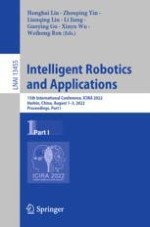2022 | OriginalPaper | Buchkapitel
An Eye Movement Study of Joint Attention Deficits in Children with Autism Spectrum Disorders
verfasst von : Wang Jing, Lin Zehui, Wang Yifan, Wei Ling, Su Linfei
Erschienen in: Intelligent Robotics and Applications
Aktivieren Sie unsere intelligente Suche, um passende Fachinhalte oder Patente zu finden.
Wählen Sie Textabschnitte aus um mit Künstlicher Intelligenz passenden Patente zu finden. powered by
Markieren Sie Textabschnitte, um KI-gestützt weitere passende Inhalte zu finden. powered by
